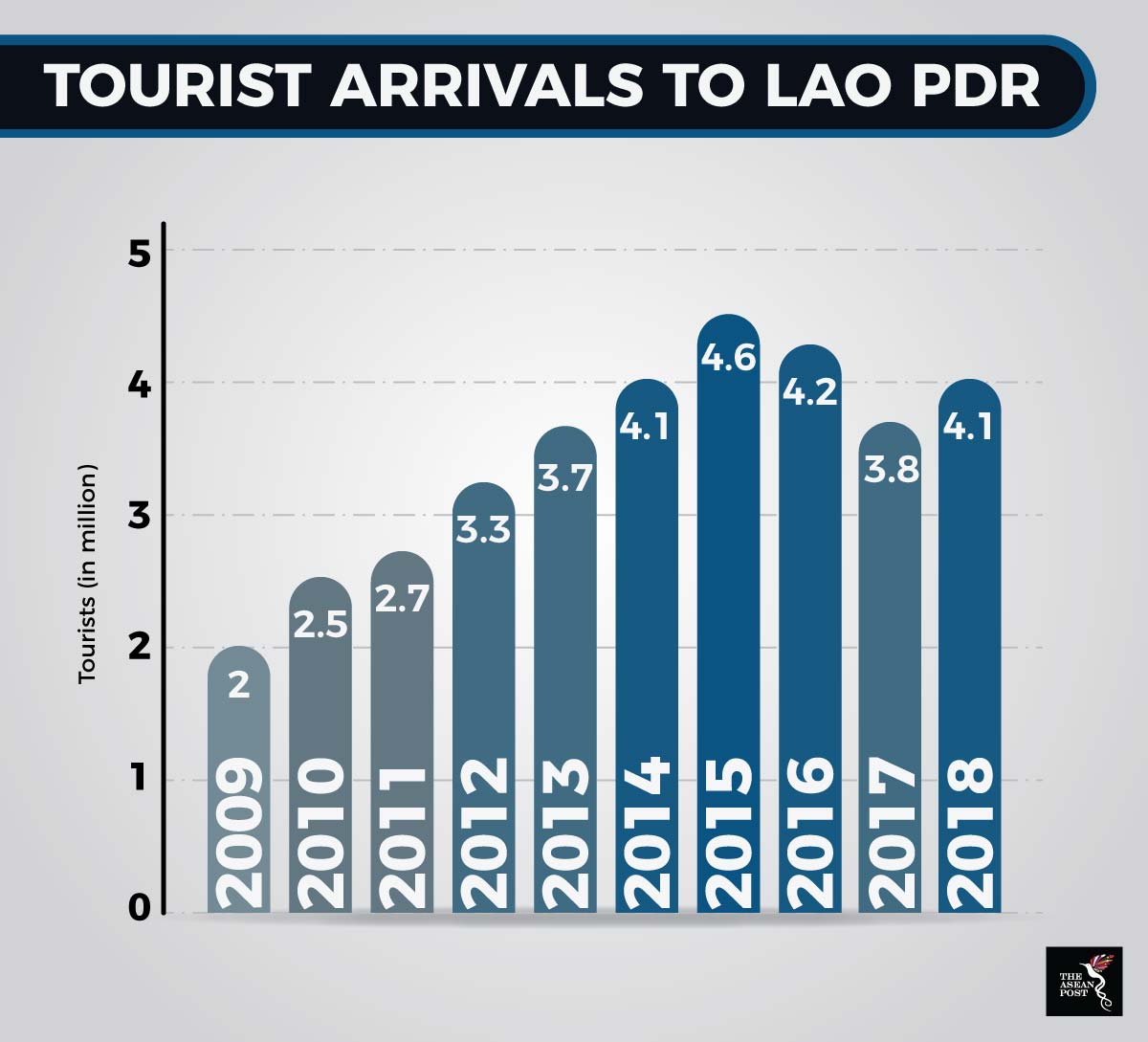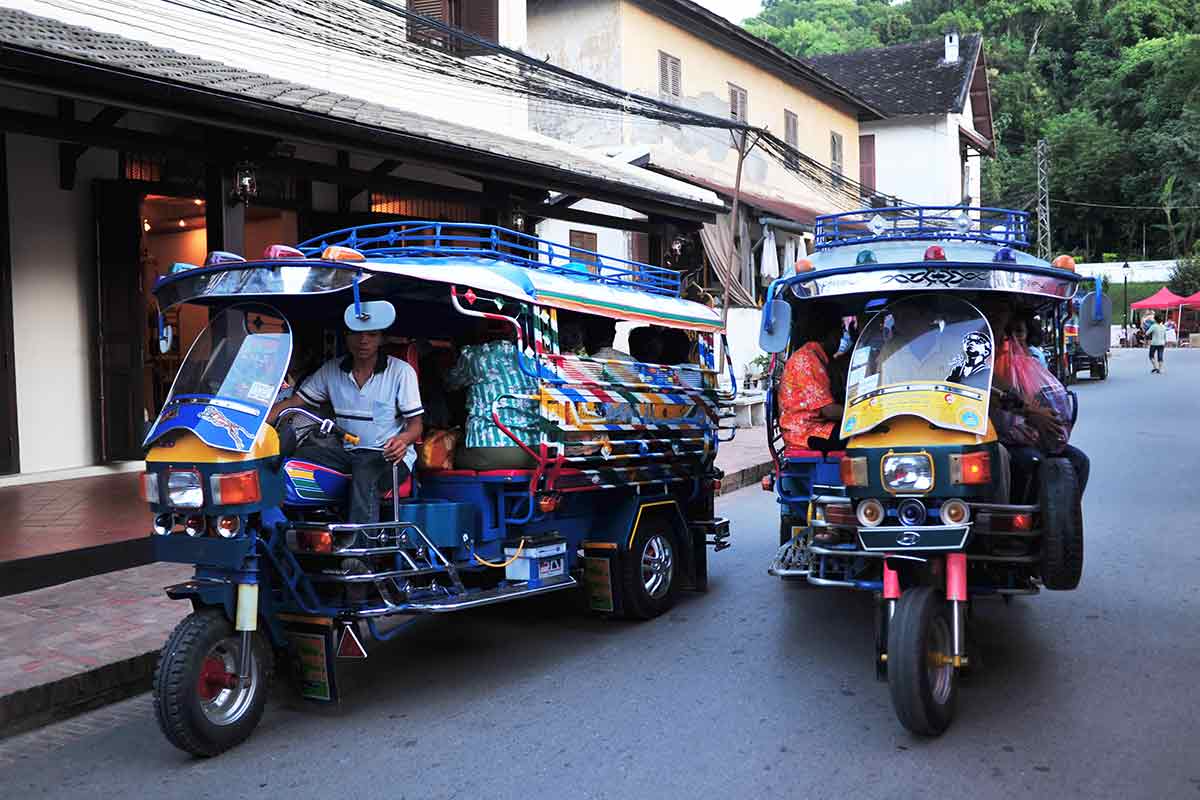In early 2018, the government of Lao had targeted to attract around five million tourists and earn around US$900 million by the year’s end. Unfortunately, local reports quoted Minister of Information, Culture and Tourism Bosengkham Vongdala as telling a parliament session that the goal would not be realised.
In the first half of the year, the figure seemed hopeful enough at 2.1 million. However, the tourism sector had been hit hard by the dam collapse incident in Champasak province coupled with floods and natural disasters in several localities. Reaching towards the end of the year, as of September 2018, the country had only welcomed a mere 2.9 million tourist arrivals.
Vongdala said other factors had contributed to the slowdown. These included the slow development of traffic infrastructure for tourist destinations due to capital shortage, limited supply of air travel services, and the slow upgrade of tourism sites. He also mentioned the slow process of adjusting local entry and exit regulations to facilitate tourism growth.
Consistent decline
Based on available statistics, Lao recorded the highest number of tourist arrivals in 2015 at 4,684,429, an increase of 12.6 percent compared to the previous year. Meanwhile, the highest increase in percentage was 25.1 percent in 2010 when the number of tourist arrivals climbed from 2,008,363 in 2009 to 2,513,028 the following year. Thailand has always accounted for the largest number of tourist arrivals to the country.
According to the latest statistics, Lao’s tourism sector seems to have picked up again as it managed to attract 4.1 million tourists in 2018. Much better than 2017 but still shy of 2015 and 2016 numbers.
In 2017, when speaking about the lack of growth in his country’s tourism sector, an unnamed government official suggested that Lao should attempt to put more effort into attracting tourists from Muslim countries in the region. He said that by providing prayer rooms in public places along with promoting halal (permissible or lawful in traditional Islamic law) restaurants, the country would be seen as being more welcoming to Muslim visitors.

Islamic tourism
According to statistics from the Pew Research Centre, among all the ASEAN countries, Lao is home to the least number of Muslims. Forecasts suggest that this isn’t about to change anytime soon and as such, it makes sense that not much has been done to make the country more Muslim-friendly over the years. Lao, however, should reconsider this.
The unnamed government official’s suggestion makes a lot of sense if one looks at the findings of several surveys and the comments of several experts.
According to the Pew Research Centre’s growth projections, the number of Muslims around the world is expected to grow steadily to 24.9 percent in 2020, 26.5 percent in 2030, 28.1 percent in 2040, and 29.7 percent in 2050, placing Islam as the second largest religion and the fastest growing one in the world after Christianity. The Centre also expects Muslims to outnumber Hindus in the Asia Pacific region by 2030, making them the largest religious group in the region.
A report by travel website HalalTrip back in 2017 also noted that Muslims aged between 18 and 36 are projected to spend more than US$100 billion annually on travel by 2025, almost double the figure in 2016. Douglas Quinby, an Atlanta-based travel analyst at research firm PhoCusWright Inc., referred to the market as an overlooked segment that the broader travel industry should look at and be prepared to cater to.
Currently, the top destinations for millennial Muslims in the region are Malaysia and Indonesia; nations where Muslims make up a majority of the population. Lao will be hard-pressed to compete against those numbers but making the country a little more “Muslim-friendly” will certainly not hurt its chances at increasing the number of tourists it hopes to attract.
Catastrophes involving the country’s zealousness in building dams coupled with the high number of tourists it had managed to bring in at one point in recent history makes tourism an important market for the country to tap into. While there is certainly a lot more Lao needs to do to ensure its position as a top-tourist destination, perhaps looking at the possibility of bringing in more Muslim tourists isn’t such a bad idea, especially considering the developments set to take place in the region over the next couple of decades.
Related articles:
